Pickleball Rules 2023: A Primer
The Essentials to Serving, Scoring, and More
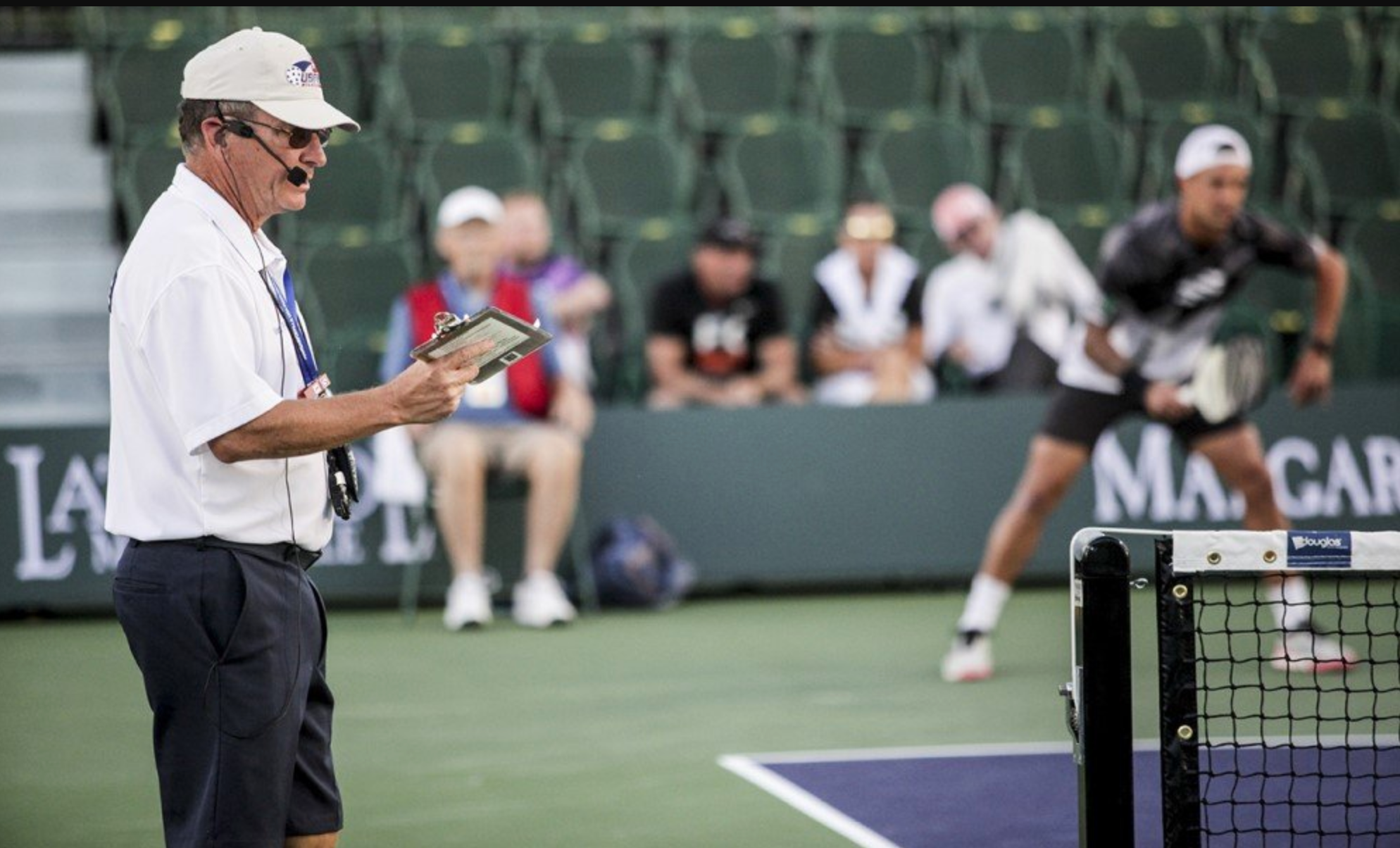
Pickleball: it’s easy to learn 'how do you play pickleball', but difficult to master. If you're curious about how to play pickleball the sport that's taking America by storm, here's a rundown of the essential rules of how to play pickleball to get your first games started.
Pickleball is an addictive combination of tennis, badminton, and ping pong that can be played in both singles or doubles format. The pickleball court size or pickleball dimensions are similar to a badminton court, with the dimensions of a pickleball court measuring 20 feet wide by 44 feet long, divided into two equal sides by a net that hangs 36 inches on the ends and 34 inches in the middle.
There are two primary types of shots:
-
Groundstrokes: Hitting ball that bounces once (balls are only allowed to bounce once).
-
Volleys: Hitting a ball out of the air, usually closer to the net.
All of the following rules, including pickleball serving rules, are official, per the guidelines set forth by the USA Pickleball Association (USAPA), the sport's governing body in the United States.
Pickleball Serving Rules
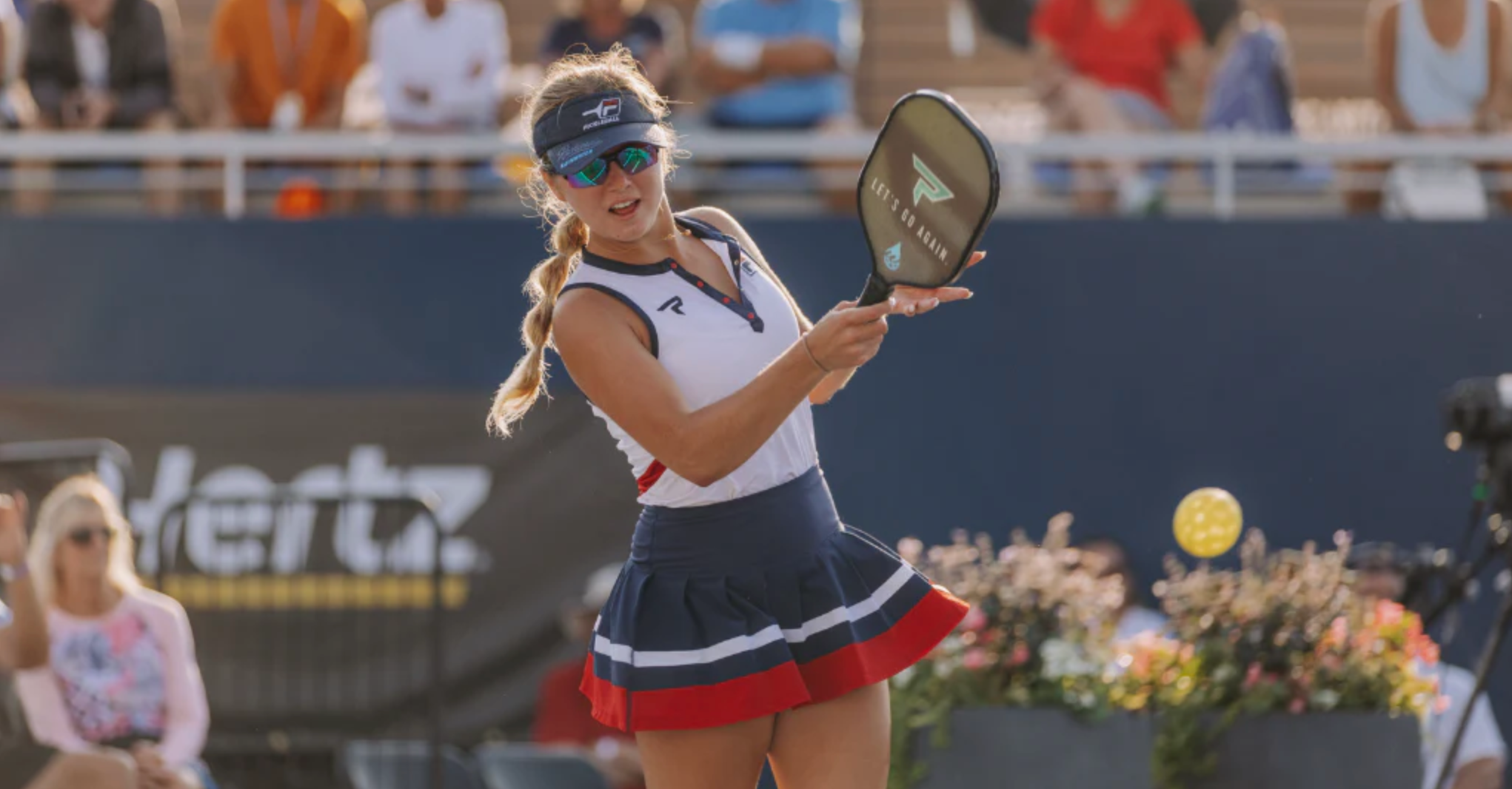
Everything starts with the pickleball serve rules. It's what gets the game underway, and as simple as the act of serving may seem, there is actually a very specific way to hit the ball over the net without committing a fault*, which ends a point.
-
Right to Serve: The right to serve goes first to the player on the right-hand side of the court. They continue serving until they commit a fault.
-
Serve Execution: The server’s arm MUST be moving in an upward arc when the ball is struck. In other words, the serve must be made underhand, and the paddle's contact with the ball MUST occur below the server's waist. The serve must be hit diagonally, landing in the diagonal service box of the opposite side (similar to tennis). Only ONE serve attempt is allowed per server, unlike tennis where a maximum of two attempts are allowed.
-
Note: a "drop serve" is when a player drops the ball onto the court and allows it to bounce before serving. A player is allowed to drop the ball from any natural height so long as no force, spin, or otherwise extraneous effort is applied to the drop, so that the subsequent bounce that follows the drop is natural and gravity-driven. If a drop serve is played, then the serving rules mentioned above do not apply. Since the rules of the drop serve override the aforementioned rules of the volley serve, then a player is not bound by the necessity of the underhand stroke and is not forbidden to make contact with the ball above the waist. However, the ball rarely bounces above the player's waist, so while an overhead serve is technically allowed in this case, it's really not feasible to attempt.
-
Also, at the time the ball is struck, the player's feet must not be touching the court or outside the imaginary extension of the sideline or centerline, and one foot must be behind the baseline on the playing surface or the ground behind the baseline.
-
-
Serve Rotation: In doubles, the serve switches between partners each time they win a point, until they commit a fault. In singles, the player continues to serve until they commit a fault.
-
Score Calling: Before each serve, the server should announce the score for pickleball, starting with their own score, followed by their opponent's score.
-
Court Boundaries: The serve must not land in or make contact with any part of the non-volley zone (aka "the kitchen"), including the line boundaries. If the ball lands inside or even touches any part of the non-volley zone boundary lines, the serve is considered a fault.
*A quick recap: how can you hit a fault?
-
Hitting the ball out of bounds.
-
Not clearing the net on the serve.
-
Stepping into the non-volley zone and hitting a volley.
-
Hitting the ball before it bounces on the receiving team's side.
-
Hitting the ball into the net.
Non-Volley Zone or The Pickleball Kitchen Rules
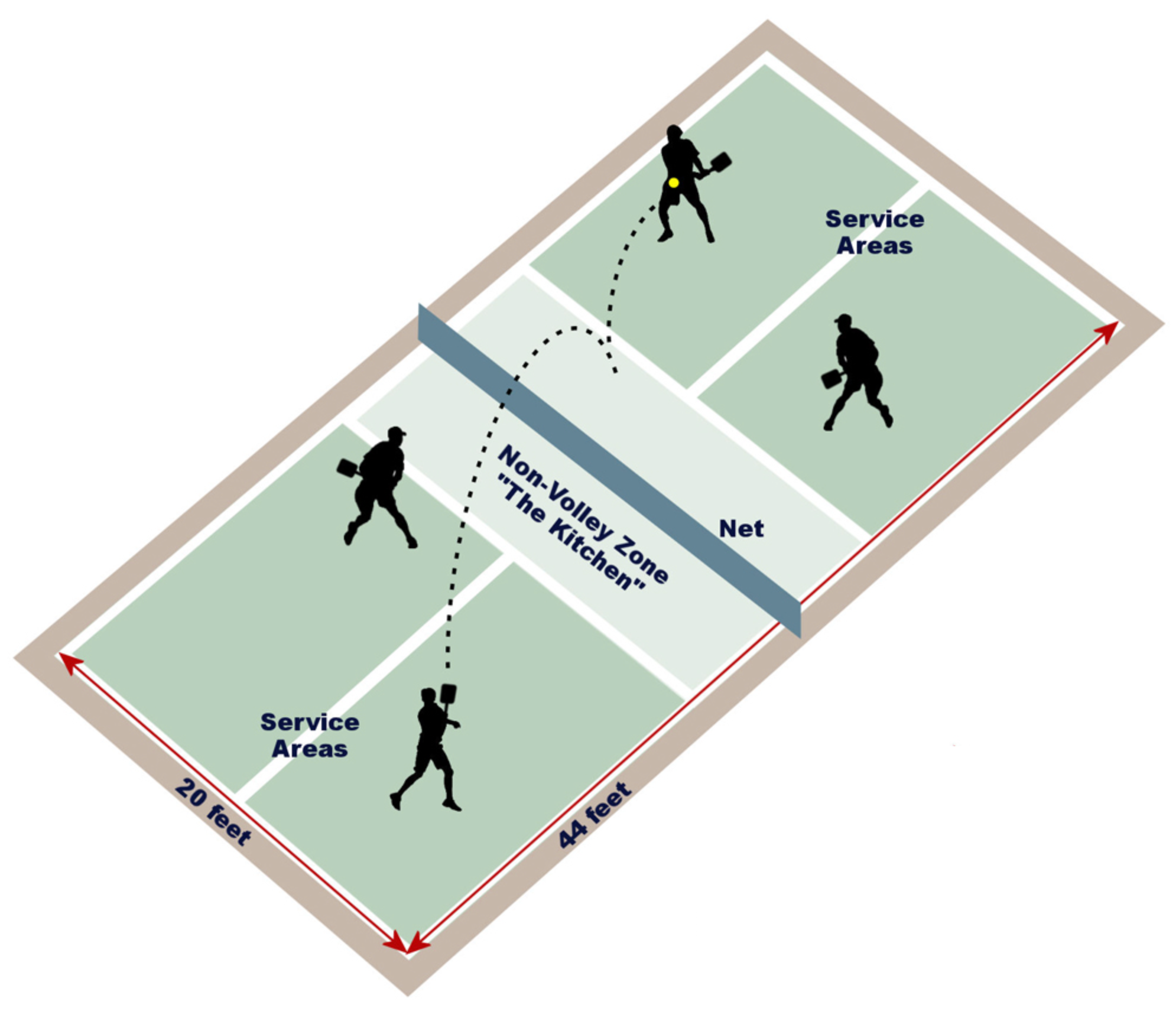
The Non-Volley Zone (NVZ), colloquially known as the "Pickleball Kitchen," is a 7-foot off-limits zone on both sides of the net. Here are the essential rules concerning the NVZ:
-
Volley Prohibition: A player cannot volley the ball (hit it before it bounces) while standing within the pickleball kitchen or NVZ.
-
NVZ Violations: If a player steps into the NVZ on their volley follow-through, it counts as a fault.
-
NVZ Exceptions: Once the ball has bounced, it may be played from within the NVZ without any restrictions. In other words, you can hit groundstrokes in the NVZ.
Pickleball Scoring Rules
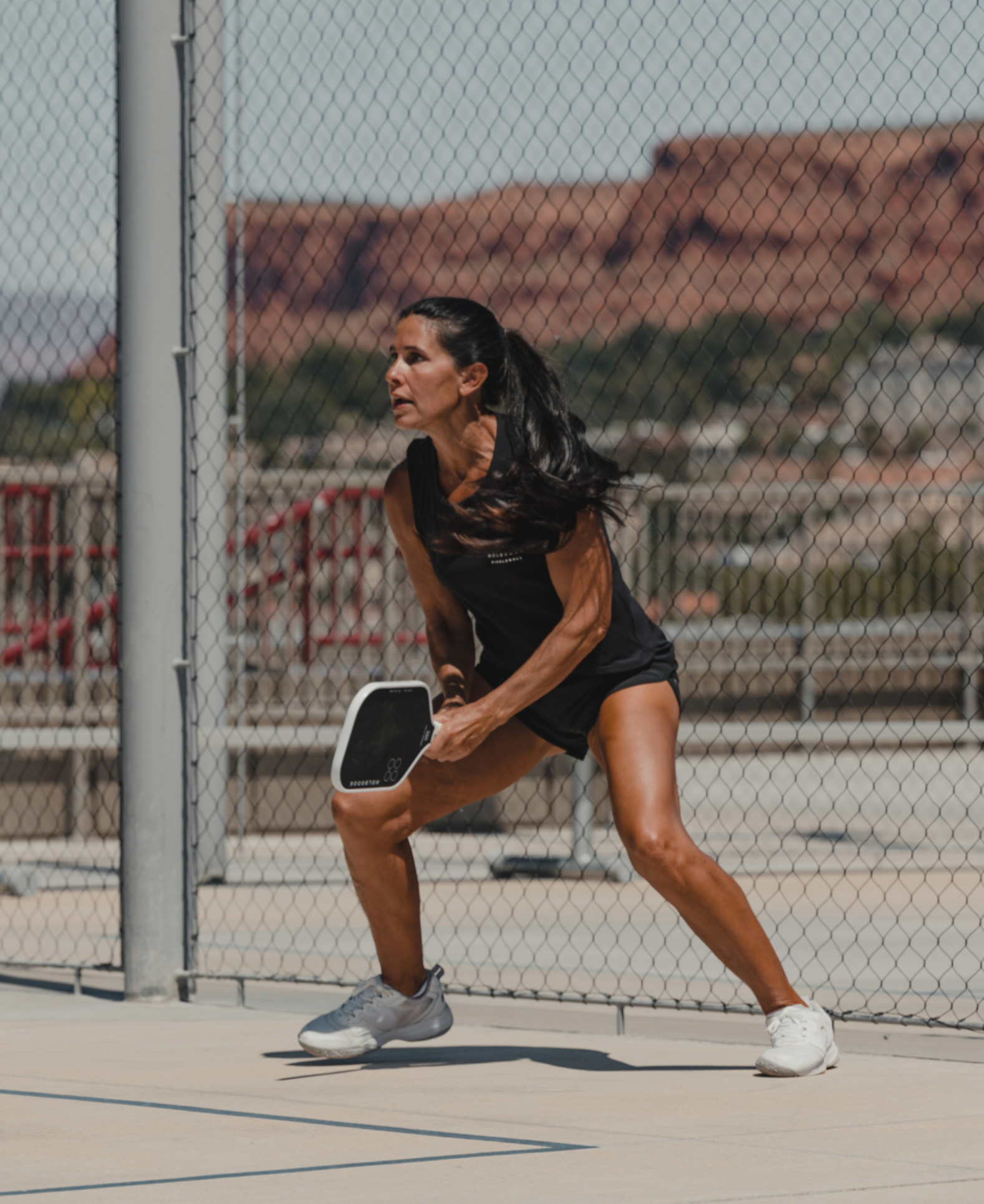
Pickleball scoring is typically up to 11, 15, or 21 points, but the winning team or player must lead by at least two points in order to win. Here are the specifics of how to keep score in pickleball:
-
Point Attribution: Except when playing rally scoring, only the serving team can score for pickleball or be awarded points. Also, points can only be awarded when the other team or player commits a fault.
-
Calling the Score: The pickleball score should be called before each serve, with the serving team's score first. In doubles, the individual server's score is called third, as "first" or "second" server.
-
Winning the Game: Games are usually played to 11, but they can go to 15 or 21. Regardless of the limit, the game must be won by 2 points.
Singles vs. Doubles Play
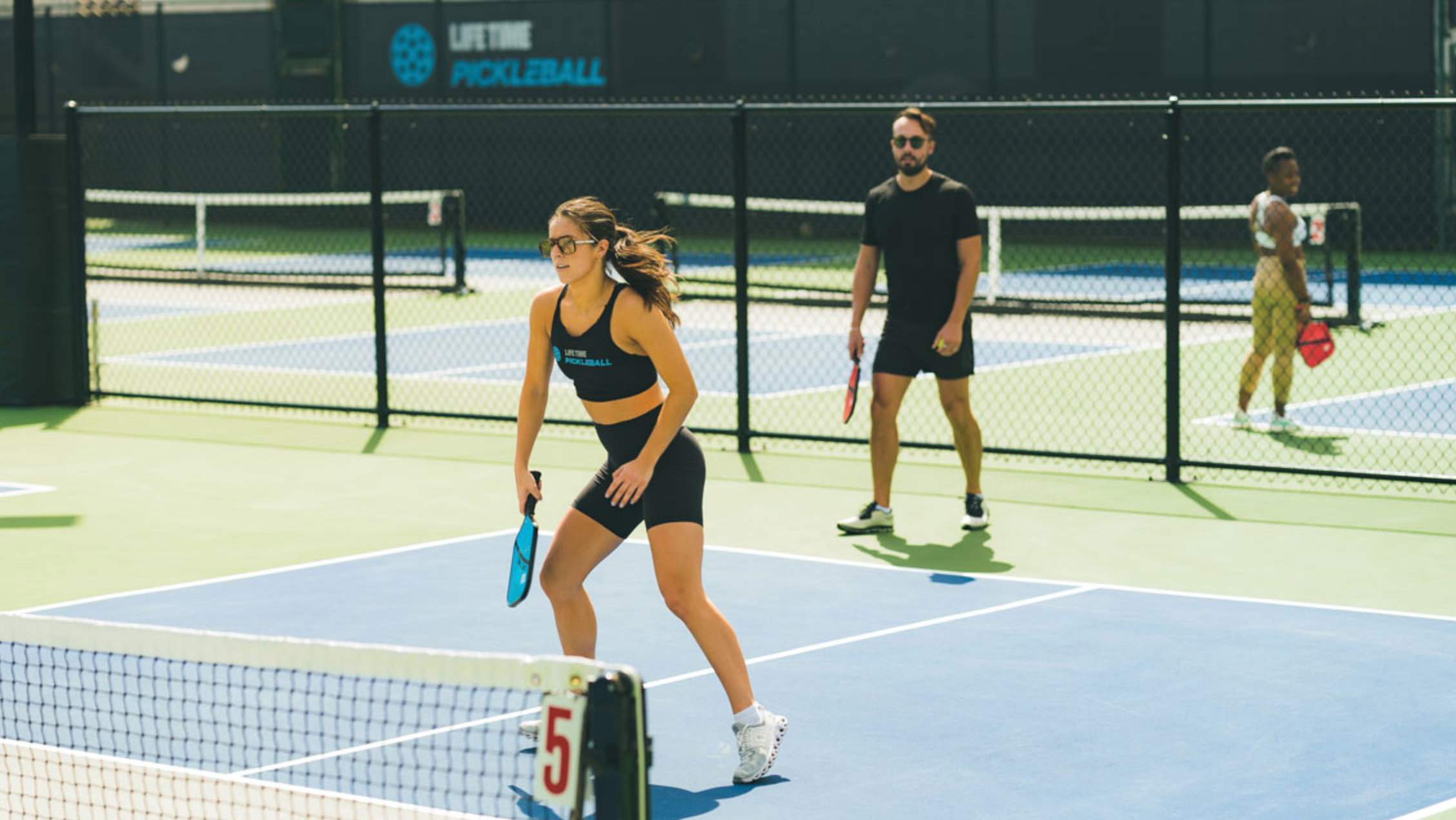
The fundamental and basic rules of how to serve in pickleball apply to both singles and doubles play, with some key exceptions to strategy and serving rotation.
-
Serve Rotation: In singles, the server continues to serve, switching sides between the left side and the right side of the court after every point won, until they commit a fault. In doubles, the serve switches between partners each time they win a point.
-
Double Bounce Rule: This rule is quite simple: in both singles and doubles, when the ball is served, the receiving team must let the ball bounce before returning, and then the serving team must also let it bounce before returning (hence the term "double bounce rule" referring to these two bounces).
-
Only after the ball has bounced at least once on each side are both teams allowed to either volley the ball (hit it without first bouncing) or play it off a bounce (also called a groundstroke).
-
Line Rules
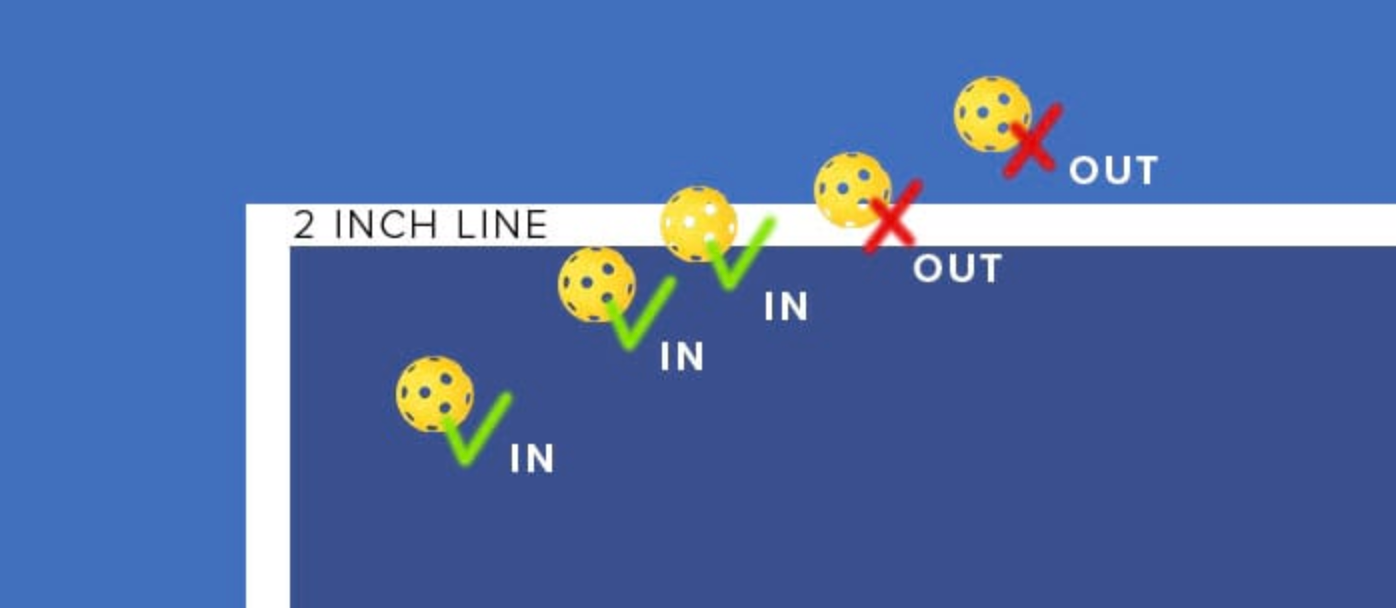
A ball that hits or makes contact with any part of the line is considered inbounds and playable.
Furthermore, while the ball can make contact with the court boundary lines and still be considered inbounds, any serve that makes contact with the lines of the non-volley zone or "kitchen" is considered short and is a fault.
Rule Changes & Modifications
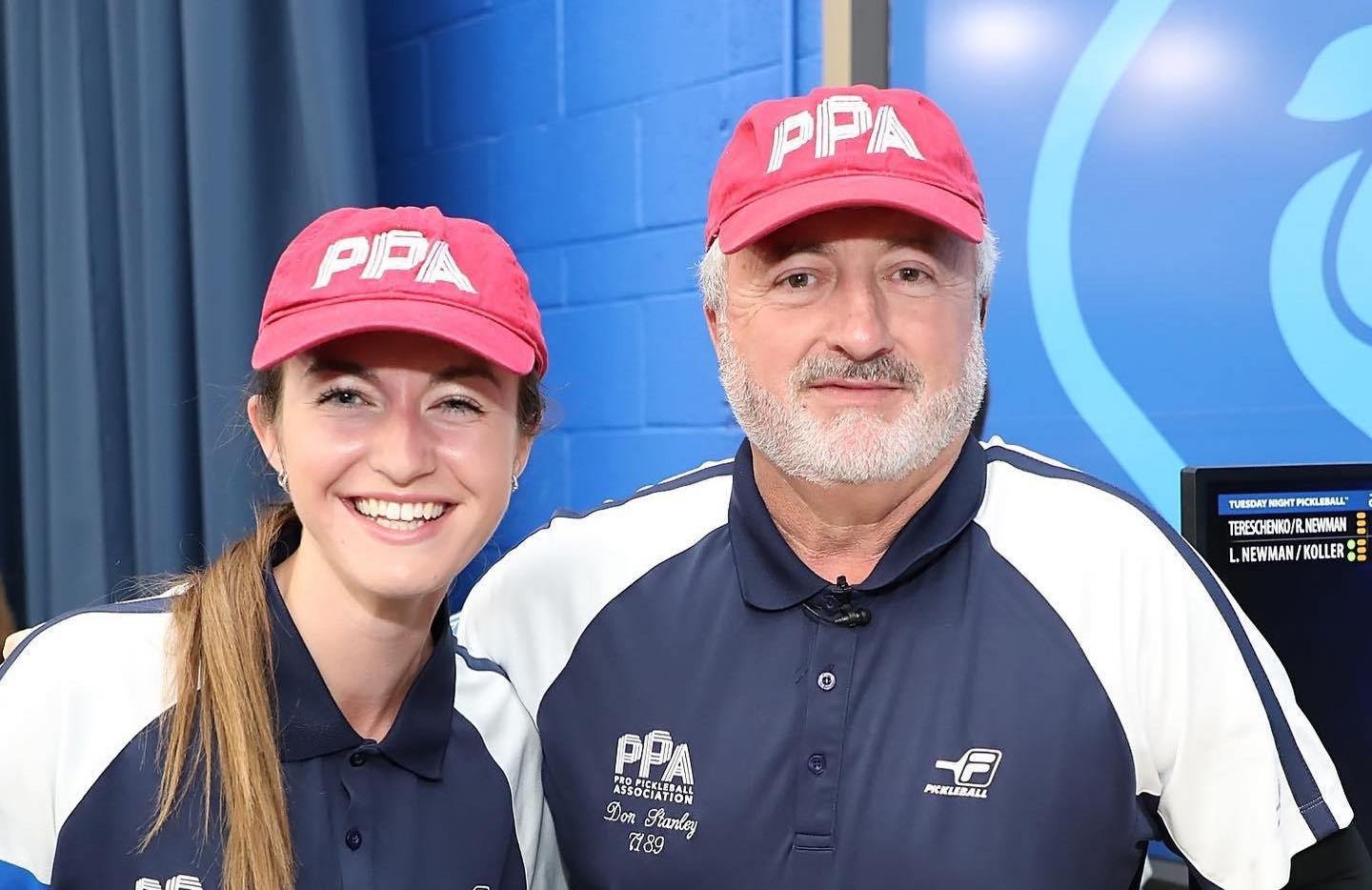
Since its inception in the mid-1960s, pickleball rules have undergone several changes to improve gameplay and fairness. Some of the significant rule changes include:
-
Pickleball Serve Rule: The original game allowed serves to be made from any position. However, in the revised rules, the server must serve from behind the baseline.
-
Pickleball Kitchen Rule: The NVZ or 'Kitchen' was not a part of the original game. It was introduced to prevent players from smashing the ball right at the net, making the game more challenging and strategic.
-
Pickleball Scoring System: The scoring system has also been revised over time. It moved from traditional 'ping pong' scoring to only allowing the serving team to score points.
-
Recent Change: As of 2021, the USAPA and the IFP introduced a new drop serve rule on a provisional basis. This rule allows players to drop the ball and hit it after it bounces for their serve, as an alternative to the traditional underhand serve.
Whether you're a newbie or on your way to the PPA, pickleball rules or pickleball regulations are designed to be inclusive and easy to understand – it doesn't take a rocket scientist to get a handle on the rules of the game. So, grab your paddle and have some fun!

